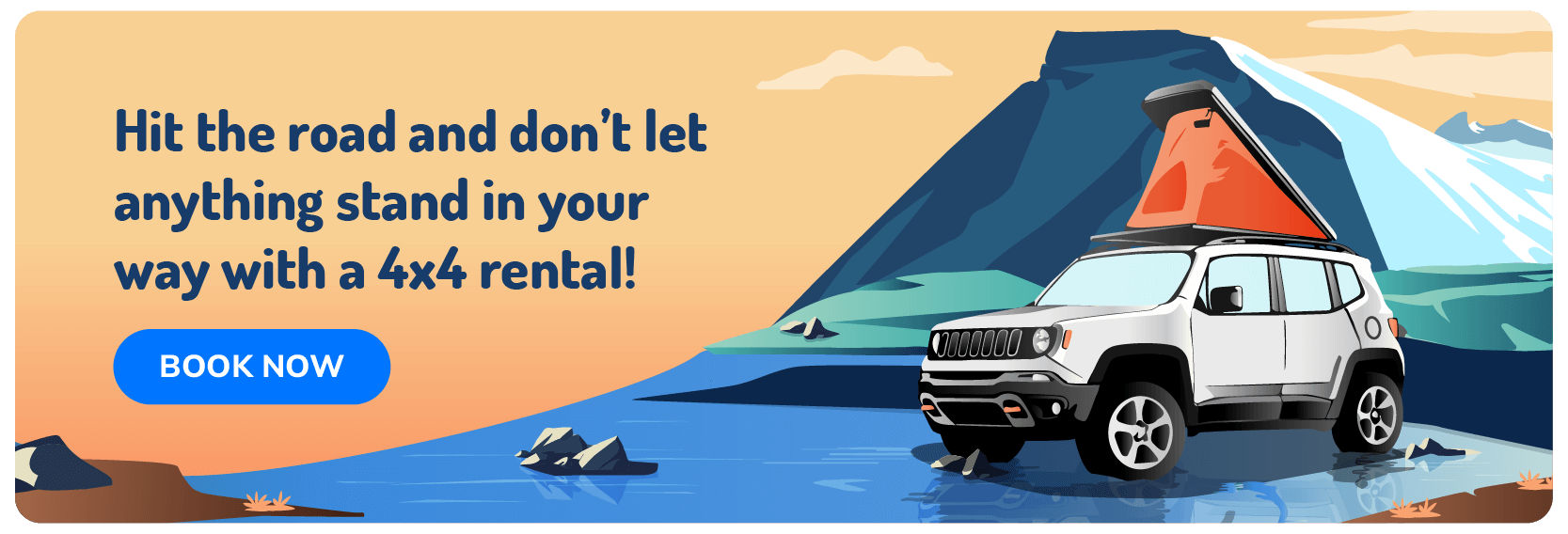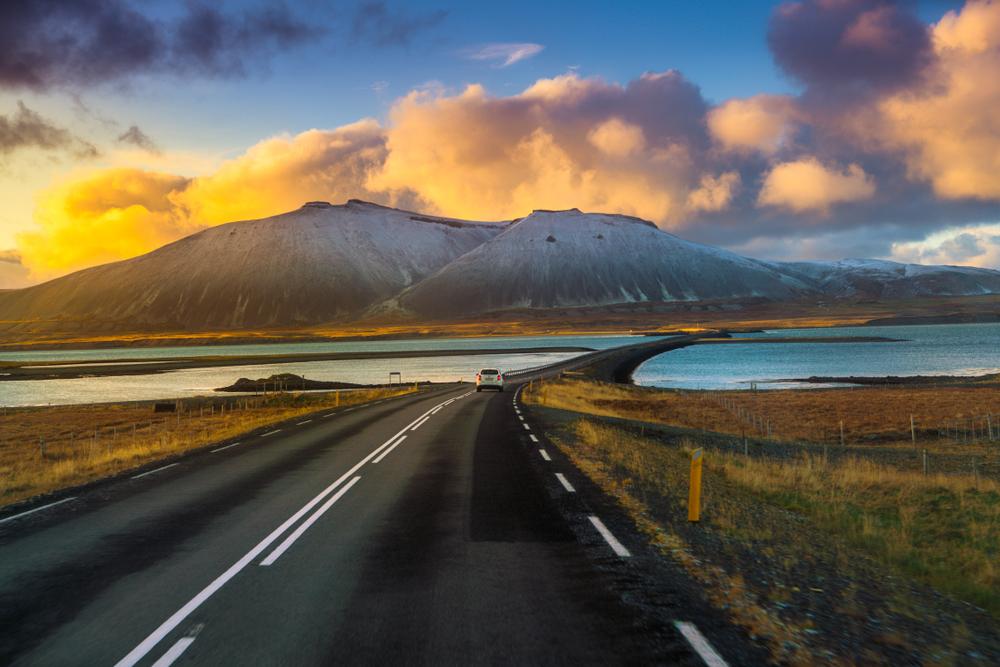Driving the Iceland Ring Road is one of those travel experiences that you won’t soon forget. The raw natural beauty of the landscapes makes such an impact that many people even consider it life changing. Here are the elemental forces of nature at work all around you.
From glaciers, volcanoes and glacial lakes to lava fields, rushing waterfalls, gorges and fjords. These are just some of the wonders you will encounter in Iceland. Exploring by rental camper allows you to take your time and connect with these landscapes by camping within them. Rather than heading to towns and urban areas, you will be in the great outdoors.
In this article, we will look at the practicalities of a Route One road trip. We’ll answer questions about the best time of year to travel, how long to take and what to expect along the way... (Other than the most incredible adventure that is!). We'll be posting again soon with a highlight of the Ring Road article all about the things to see and do along the full length of the route.

Driving the Ring Road
As the name suggests the Ring Road loops right around the island of Iceland. The route doesn’t reach all of the remote corners of the island but it does cover a sweep of truly amazing sights. In South Iceland and in the West the Ring Road mostly hugs the coastline. But in the North and West it runs a little further inland.
If you’d like to see the northern and western coasts you will need to take a few day tour detours. The same goes for the Golden Circle, the highlands the Blue Lagoon and the Snæfellsnes Peninsula. You will need to factor in a little more time to explore each of these areas.
What is the length of the Ring Road?
The entire Ring Road is 823 miles from start to finish. The route is mainly on a paved two-lane highway that passes through the most spectacular of scenery. At times, parts of the route in North Iceland switch to gravel road stretches. And there are few single lane bridges too.

There is also one very special sight in North Iceland where you will need to drive on a slow gravel track for about half an hour. But it is well worth the bumps to reach the amazing Dettifoss Waterfall. This is the most powerful of the waterfalls in Iceland and an incredible place. Other than that it should be a smooth drive all the way round in the summer months.

Gas stations on the Ring Road
The Ring Road in Iceland is one of the few main roads. Even so, gas stations can be few and far between. This is especially true as you head north. If you have any space in your tank and you spot a gas station, do pull over and top up. The same goes for supermarkets and shops. They can get sparse in the north so stock up on snacks and anything else that you need.
The right amount of time for a road trip
This is a sliding scale. You could drive the ring road in summer in about 3-4 days. But you wouldn’t enjoy the experience half as much as you should. One week would be reasonably comfortable if you were organized and stuck to a pretty strict schedule. Ten days would be much better and allow some time for spontaneity, relaxation or the odd short day trip or detour.
Two weeks are even better and a really good amount of time to add in a few activities. You might take a whale watching tour in the north for example or explore some of Iceland’s magnificent hiking trails. Anything upwards of two weeks would be an absolute luxury. But if you can take the time then you most definitely should.
The best time of year for driving the Ring Road
Driving the Ring Road in Summer
The summer months are without a doubt the best time of year to drive the Ring Road. The Midnight Sun brings 24 hours of daylight at the height of the summer. So you will have plenty of time for both driving and sightseeing. The weather in Iceland is also a great deal kinder during the summer months. It can still be quite wild and unpredictable at times but it is much more likely to be reasonably settled.

The high season for visitors is June to August. This does mean that the roads in the south can get a bit busier at this time of year. Tour buses head out from Reykjavík on day trips to see many of the sights along the South Coast of Iceland. So they will be using the Ring Road and you will also be sharing the sights with quite a few other tourists.
If you have your own rental camper you will be able to time your visits around the tour bus arrival times. The roads in this busier part of the country are really well maintained. So driving in Iceland in summer is safe and relatively simple.
As you head beyond the reach of the majority of the day trip tour buses the roads become far quieter. You will notice this almost as soon as you begin to drive past the Vatnajökull National Park in the west. This will be true for the whole northern and western stretch of the Ring Road. Except around the popular Diamond Circle tour route in the north when it could be a little busier. It will be nothing like as busy as it is in the south though. Far fewer tourists travel up to this part of the country.
Shoulder Season Driving
The months either side of the high season might just be the best times for driving Iceland’s Ring Road. So we’re talking from late April through May and then September into early October. These months can often have very similar conditions to those in late and early summer respectively. So there will be plenty of daylight hours and the weather won’t be as severe as it is in winter.
You will need to factor in more time though as there may be some bad weather to contend with. High winds and storms can make it dangerous to drive and you may need to wait out a storm. It really depends on the fickle and notoriously unpredictable Iceland weather. One great thing about travel at this time of year is that you get the best of both worlds.
You have plenty of daylight hours for driving and sightseeing and then several hours of complete darkness. This means that you’ll sleep easier AND you might catch sight of the Northern Lights!

Winter Driving in Iceland
The above is doubly true in winter. Driving the Ring Road in winter is not really a good idea. For a start, with so many hours of darkness you will miss the spectacular views as you drive. Also, large parts of Iceland’s road network could well close for long periods of time. There can be lots of snow and high winds at this time of year, so certain types of sightseeing are restricted.
It is certainly not possible to drive the Ring Road in winter by rental motorhome. It could be possible to drive it in a compact four wheel drive camper or in a hire car. But only if you really want to travel at this time of year and you have plenty of time. You will need to be a very confident driver and check the weather forecasts regularly.

Visiting Iceland in winter is much better suited to day trips. You could enjoy a city break to Reykjavik or the northern capital of Akureyri. From there you can enjoy short drive tours to nearby sights and get stuck into some winter activities like skiing or ice caving.
To enjoy the ultimate Route One road trip we highly recommend a summer or shoulder season trip. At these times of year you’ll really make the most of Iceland’s incredible scenery and daylight hours.


